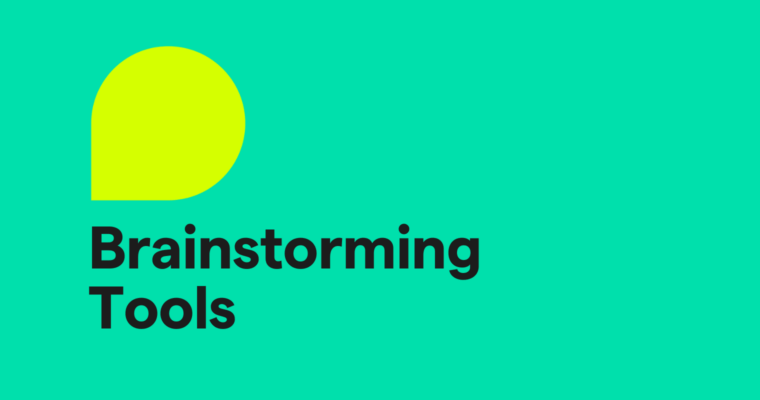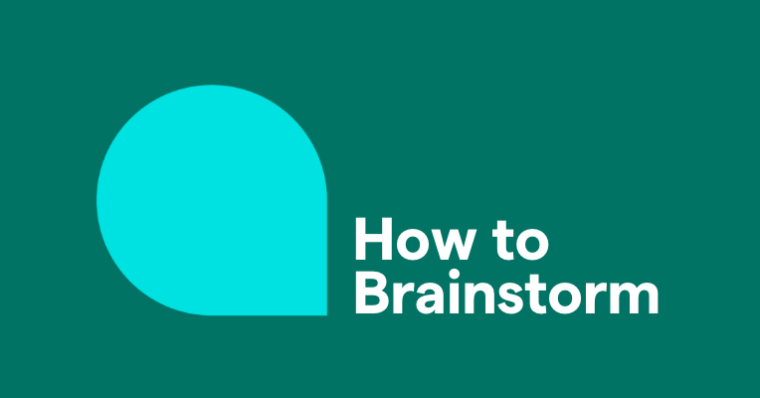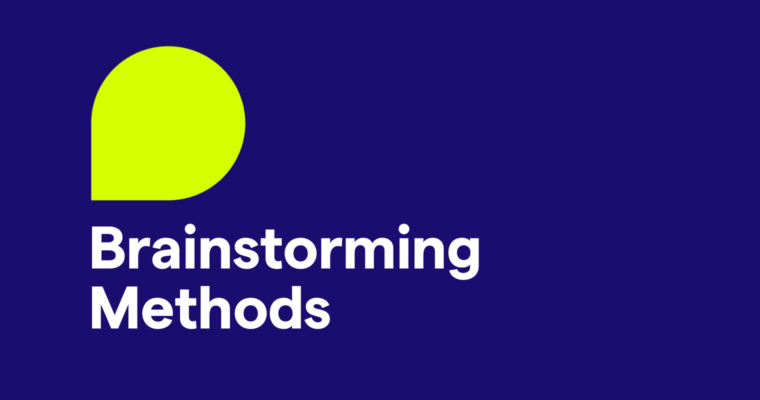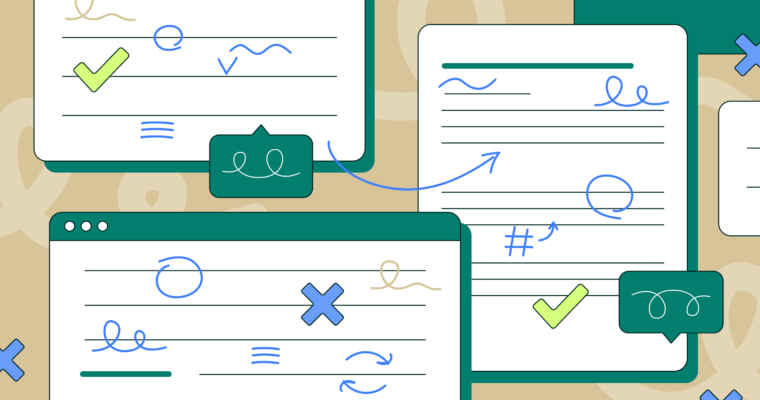
Great ideas don’t appear out of thin air—they take exploration, structure, and sometimes the right tools to bring them to life. Whether you’re generating fresh concepts, solving complex problems, or collaborating with a team, brainstorming is the key to unlocking innovation.
But how do you turn scattered thoughts into actionable insights? The right brainstorming tools can help streamline the creative process, making it easier to capture, refine, and organize ideas. From AI-powered digital platforms to traditional mind-mapping techniques, this guide explores 23 of the best brainstorming tools to boost creativity and turn inspiration into action.
Table of contents
AI-powered brainstorming tools
Traditional brainstorming tools
Choosing the right brainstorming tool
AI-powered brainstorming tools
Artificial intelligence (AI) is transforming brainstorming by enhancing idea generation, content creation, and automation. These AI-powered tools accelerate the creative process, providing fresh insights, structured suggestions, and even visual inspiration.
1 Grammarly—Grammarly helps you jump-start brainstorming by generating topic ideas, expanding key points, and structuring thoughts effectively. Its AI-powered suggestions offer fresh angles, refine ideas, and break through creative blocks—so you can brainstorm with confidence and turn concepts into clear, compelling writing.
2 ChatGPT—This chatbot assistant generates content ideas, solutions, and structured outlines for brainstorming. Type a prompt, and ChatGPT provides suggestions and alternative viewpoints.
3 Gemini—Google’s AI-powered assistant gives you direct access to Google AI. It can help with brainstorming research topics, content outlines, and structured idea generation.
4 DALL-E—A tool that uses AI to generate images based on text descriptions.
5 Midjourney—A text-to-image generator that uses natural language description to create images.
Digital brainstorming tools
Digital brainstorming tools bring structure, efficiency, and collaboration to the creative process. Whether you’re working solo or with a team, these tools make it easier to generate, organize, and refine ideas in a streamlined, interactive way.
Mind-mapping tools
Mind mapping is a dynamic way to structure ideas, reveal connections, and spark new thinking. These tools provide an intuitive, visual approach to brainstorming, helping users organize their thoughts and refine their concepts.
6 MindMeister—This cloud-based mind-mapping tool allows teams to brainstorm in real time. It offers customizable templates and integrations with tools like Google Drive and Trello.
7 XMind—XMind helps users create, organize, and share ideas and information. It offers features like Gantt charts, timelines, collaboration, and task management.
8 Coggle—A user-friendly, browser-based tool for creating and sharing visual representations of ideas and information. It offers real-time collaboration and has both free and paid versions available.
Online collaborative tools
Online collaboration tools make team brainstorming seamless, allowing both remote and in-office members to contribute, organize, and refine ideas in real time. These platforms enhance teamwork by providing shared spaces for idea generation, discussion, and decision-making.
9 Miro—A digital whiteboard that supports sticky notes, mind maps, and diagrams.
10 Stormboard—A brainstorming platform that mimics the sticky-note experience, allowing users to add, organize, and vote on ideas in a structured manner.
11 Lucidchart—A visual workspace that combines flowcharts, diagrams, and brainstorming templates, enabling teams to plan and execute ideas more effectively.
12 Google Docs—A widely accessible tool for brainstorming and collaboration, allowing multiple users to contribute, comment, and refine ideas in real time.
13 FigJam—A digital whiteboard from Figma, designed for creative brainstorming with features like sticky notes, voting, and freehand drawing.
Note-taking and organization tools
Great ideas are only as valuable as how well they’re captured and organized. The right note-taking and organization tools help structure thoughts, track progress, and ensure brainstorming sessions lead to actionable plans.
14 Notion—A versatile note-taking and organization tool that combines databases, to-do lists, and collaborative spaces for structuring brainstorming ideas.
15 Trello—A Kanban-style tool that helps track brainstorming ideas, assign priorities, and organize tasks visually. Ideal for turning brainstormed ideas into an actionable workflow.
16 Evernote—A note-taking app that allows users to capture, categorize, and retrieve brainstorming ideas using text, images, and voice notes.
Traditional brainstorming tools and methods
While digital and AI-powered brainstorming tools offer speed and efficiency, traditional methods remain powerful for generating ideas, fostering collaboration, and refining concepts. Whether using physical tools for hands-on brainstorming or structured techniques for deeper problem-solving, these approaches continue to deliver results.
Physical tools for brainstorming
Sometimes, the best ideas come from putting pen to paper—or marker to whiteboard. These hands-on tools make brainstorming more interactive and adaptable.
17 Sticky notes—A simple but proven method for visually organizing ideas by writing them down and spreading them out on a surface like walls or whiteboards. The ability to rearrange them makes this tool a favorite.
18 Whiteboards—The ultimate free-form brainstorming tool that allows for real-time mind mapping, idea sketching, and team discussions. It is a quick and easy way to capture ideas and build off them using whichever method works best.
19 Notebooks and journals—A timeless brainstorming essential that eliminates distractions and allows you to document ideas organically.
Structured brainstorming techniques
For complex problems, large groups, or in-depth analysis, structured brainstorming techniques provide a more methodical approach to idea generation.
20 Brainwriting—Participants write ideas silently before discussing them, allowing for more diverse input without bias.
21 Reverse brainstorming—Instead of finding solutions, start by identifying how to make a problem worse, then flip those ideas into creative solutions.
22 SCAMPER method—A structured framework asking Substitute? Combine? Adapt? Modify? Put to another use? Eliminate? Reverse? to refine brainstorming ideas.
23 Starbursting technique—A method focusing on asking questions rather than providing answers, helping to expand and clarify brainstorming ideas.
Choosing the right brainstorming tool
There may not be a “best” brainstorming tool, but there may be a right one for your situation. When selecting a brainstorming tool, consider these factors:
- Purpose and use case—Solo versus team brainstorming? Structured (mind maps) versus freeform (whiteboards)?
- Collaboration needs—Do you need real-time editing, cloud storage, and remote access?
- Digital versus physical—Hands-on interaction versus flexibility and accessibility?
- Integration—Does it work with existing productivity tools?
- Ease of use—Intuitive interface versus steep learning curve?
- Budget and scalability—Free versus premium features?
Conclusion
Choosing the right brainstorming tool is crucial for sparking creativity and driving innovation. With a range of digital, AI-powered, and traditional tools available, selecting the most suitable tool depends on:
- Individual and/or team needs
- Collaboration requirements
- Ease of use
Tools like Grammarly make brainstorming incredibly easy to add to your existing writing process, since it works anywhere you already write. Combining Grammarly along with different tools and methods can enhance the brainstorming process. Experiment with various tools to discover what works best for you. By doing so, you can unlock the full potential of brainstorming and drive innovation in your writing.
Brainstorming tools FAQs
What is the best tool for brainstorming?
The best brainstorming tool depends on how you like to generate and organize ideas. If you prefer free-flowing creativity, look for something that allows for visual mapping or open-ended note-taking. For structured brainstorming, choose a tool that helps categorize, prioritize, and refine concepts. The ideal option should match your thinking process, making it easy to capture ideas, collaborate with others, and turn thoughts into actionable steps.
What is the best AI tool for brainstorming?
For those looking to enhance brainstorming with AI, Grammarly is a powerful option that supports the entire writing process—from ideation to final draft—right where you already write. Whether you need help generating ideas, refining your message, or ensuring clarity and coherence, Grammarly provides intelligent suggestions to keep your thoughts flowing. It works seamlessly across different writing platforms, helping you brainstorm effectively and turn rough ideas into polished content.
How can I organize my brainstorming ideas effectively?
Organizing brainstorming ideas effectively starts with capturing thoughts in a way that makes sense for your process. A structured approach, such as categorizing ideas into themes, can help with clarity. Visual techniques like mapping connections between ideas can reveal patterns. For long-term planning, sorting concepts by priority or feasibility ensures that brainstorming leads to actionable steps. Keeping a central record of ideas, whether digitally or physically, helps track progress and revisit concepts later.
What’s the difference between structured and unstructured brainstorming?
- Structured brainstorming follows a clear process, such as guided questions, step-by-step frameworks, or predefined categories. It is useful when a team needs direction or when time is limited.
- Unstructured brainstorming is more open-ended, allowing ideas to flow freely without immediate evaluation. This approach works well for creative exploration. A combination of both methods can be beneficial—starting with free-flowing ideas and then refining them with structure.
Can physical brainstorming tools still be effective in a digital age?
Yes, physical brainstorming methods remain valuable, even with the rise of digital alternatives. Writing ideas on sticky notes, sketching on whiteboards, or using index cards can encourage spontaneous thinking and engagement. Some people find that working with physical materials enhances focus and creativity. While digital tools offer convenience for storage and remote collaboration, blending both approaches can create a more dynamic brainstorming process.






